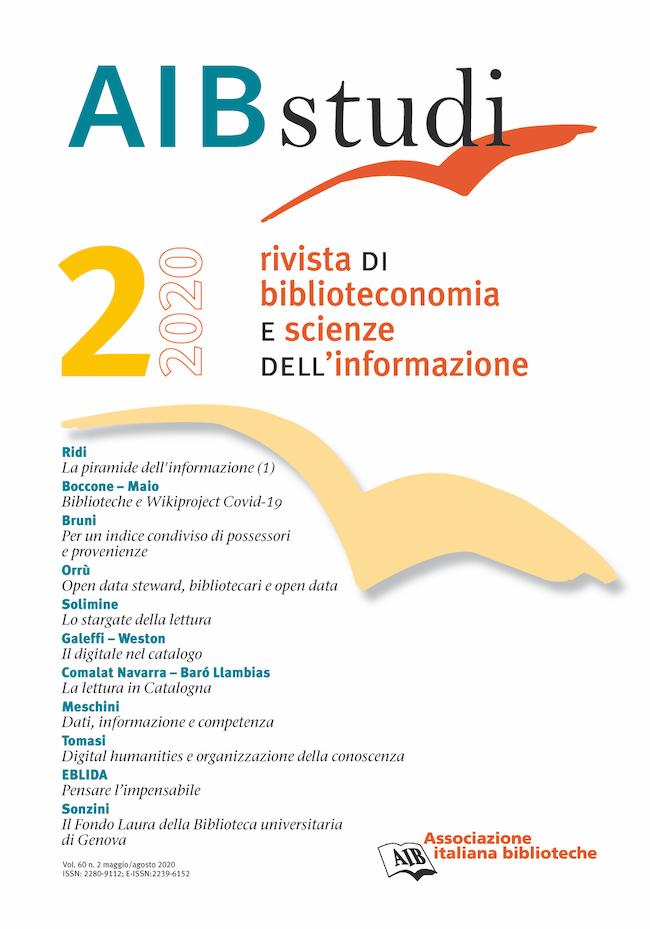The information pyramid: a proposal (first part)
DOI:
https://doi.org/10.2426/aibstudi-12215Keywords:
DIKW hierarchy, information, knowledgeAbstract
The article, linked to the one published by the author in a previous issue of AIB studi, proposes a variant of the classic DIKW (data, information, knowledge, wisdom) pyramid (or hierarchy) in which wisdom is replaced by two particular types of knowledge: consciousness and self-consciousness.
In the new DIKAS pyramid (data, information, knowledges, awarenesses, self-awarenesses) data are objective alternations of continuity and discontinuity in reality, which can only be considered as potential or ‘syntactic’ information; real information (called ‘semantic’) is not a static entity, but a dynamic causal process that connects data with other data (contained in informational systems that are not necessarily biological but complex, autonomous and dynamic enough to be called 'cognitive systems') making themeaning emerge in a two-stage process (contextualization generated by ‘unlimited semiosis’ and interpretation generated by ‘pragmatic semiosis’); knowledges (or ‘pragmatic information’) are the data contained in cognitive systems, which can in turn trigger further information processes within each cognitive system; awarenesses (the whole of which is called ‘consciousness’) are knowledges which, in the most complex biological cognitive systems, temporarily acquire a particularly high level of connection with most of other knowledges included in the same cognitive system and, therefore, an equally high level of accessibility which in turn brings out the phenomenon of subjectivity; finally self-awarenesses (the whole of which is called ‘self-consciousness’) are awarenesses that have as their objects other single awarenesses or their sets or the whole consciousness.
The second part of this article will be published in AIB studi, 60 (2020), n. 3.









